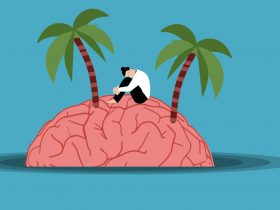Back pain is one of the most common reasons for a person to visit their doctor, and it tops the list of reasons for missing work. Back pain is certainly prevalent, and it’s sometimes viewed as a byproduct of modern life. Spending a long time hunched over a desk, lack of exercise, and poor sleep quality can all cause a sore back.
While some types of pain require medical intervention, there are a few steps you can take at home to treat less severe cases.
Reader's Roadmap
#1 Change your chairs
Unsurprisingly, what you sit on makes a huge difference to how your back feels. Correct posture is important at all times, but even more so when you’re seated for long periods. As a general rule, the more flexible and ergonomic the chair, the better it will be for your back. Chairs that mold to the form of your body (rather than remaining rigid) can help you to retain the correct posture while staying relaxed.
There are plenty of chairs designed specifically for bad backs, but you can get even more adventurous and try one of the many bean bag chairs for adults. Once regarded as novelty items, bean bags have a lot of similarities with much more expensive, specifically orthopedic chairs. Their soft fillings act like memory foam, molding to your form while offering support. Bean bags might seem purely for fun, but they strike an excellent balance between malleability and support. Sinking into one just feels good, too, so they’re a great alternative if you don’t want to take the plunge with more expensive chairs.
#2 Exercise
If you’re suffering from a bad back, exercise might seem like the last thing you want to do, but back pain is a vicious circle. Sufferers exercise less, which exacerbates the pain, which in turn makes them even more sedentary. Gentle exercise has been proven, time and again, to be an excellent remedy for a bad back, even if it doesn’t feel like it at the time.
Exercise strengthens the muscles in your back and core. A strong core helps with balance and posture, both determiners of back health. Simple aerobic exercise, including gentle walks and swimming, can make all the difference without putting undue strain on your back. A little exercise goes a long way, and you’ll find that you can build up your movement as you progress.
#3 Stretching
Like exercising your back, stretching might feel like the last thing you want to do when you are in any pain. However, gently stretching your back can help to ease the muscles around the affected area to stop it from becoming stiff and getting worse over time. Ideally, if your back pain is so severe, you should seek help from a medical professional who can advise you exactly how to stretch your back. You should never overstretch it so much that it causes you further pain, but as a general rule, you should only stretch to the point that you can feel a slight pull and hold it for a few seconds before relaxing.







Leave a Reply
View Comments